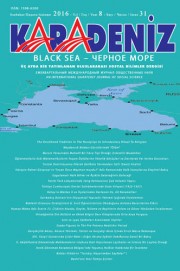Tarihî Türk Lehçelerinde Ḳatıġ Kelimesinin Çok Anlamlı Yapısı
The Polysemic Structure Of The Word Ḳatiġ In Historical Turkish Dialects
Author(s): Filiz Meltem Erdem UçarSubject(s): Semantics, Historical Linguistics, Philology, Turkic languages
Published by: Kültür Ajans Tanıtım ve Organizasyon
Keywords: Polysemy; semantics; the word ḳatıġ; historical Turkish dialects;
Summary/Abstract: Connected to nature in terms of its concepts and paths expressing these concepts, Turkish language takes its expression power rather from nature. Turkish has a vivid and strong expression, and an analysis of Turkish vocabulary in this respect demonstrates the existence of words or phrases which derived from metonymies such as “from man to nature”, “from nature to man”, and “from nature to nature”. Metonymies, a fundamental quality of languages, is one of the primary causes for the literary element called polysemy. Polysemy means that words acquire new meanings associated with their original meaning, through various metonymies and extensions, and become polysemic. The identification of newly acquired meanings of words is of great importance for discovery of deeper meanings in and correct interpretation of texts, especially historical ones. The identification of each new meaning clears any blurs in interpretation. Polysemy is also significant as it shows the advancement level of a language and its richness in vocabulary. In this respect, this study deals with polysemic structure of “ḳatıġ”, a word common in the historical Turkish texts.
Journal: Karadeniz Uluslararası Bilimsel Dergi
- Issue Year: 2016
- Issue No: 31
- Page Range: 101-117
- Page Count: 17
- Language: Turkish

